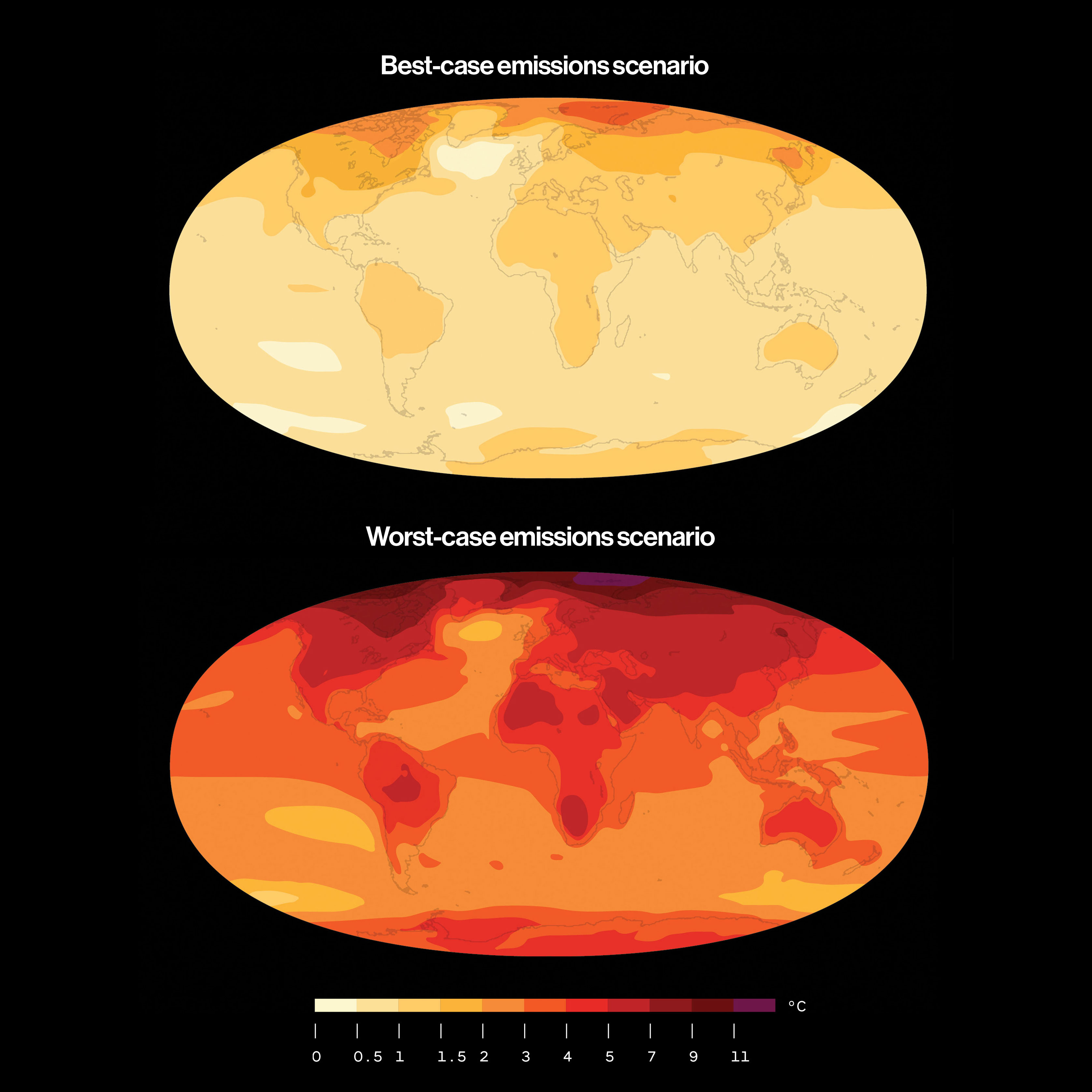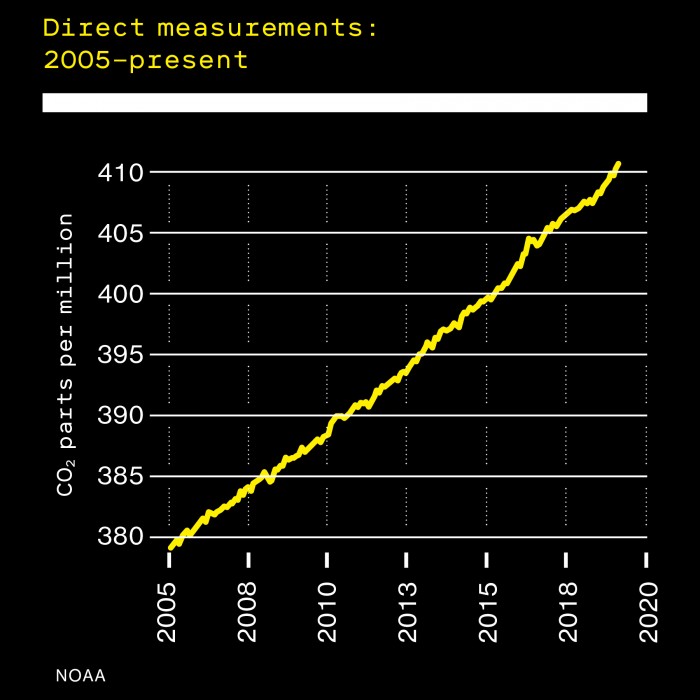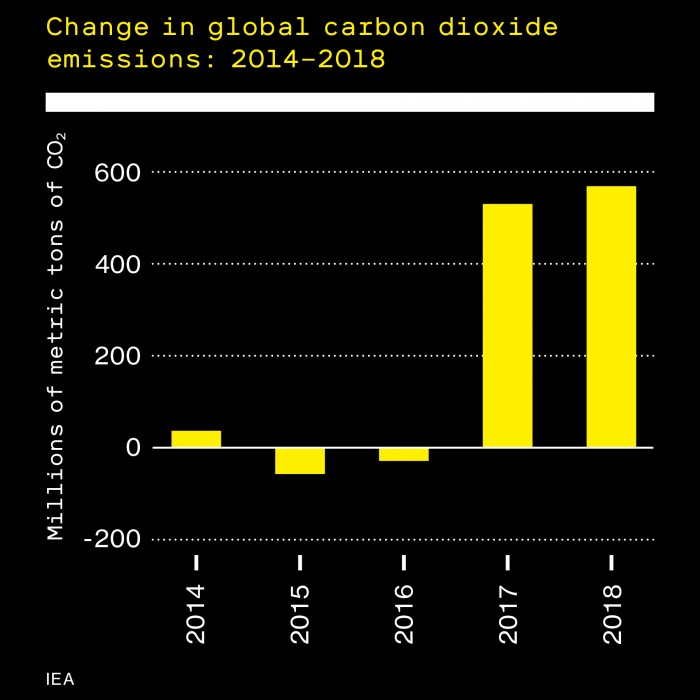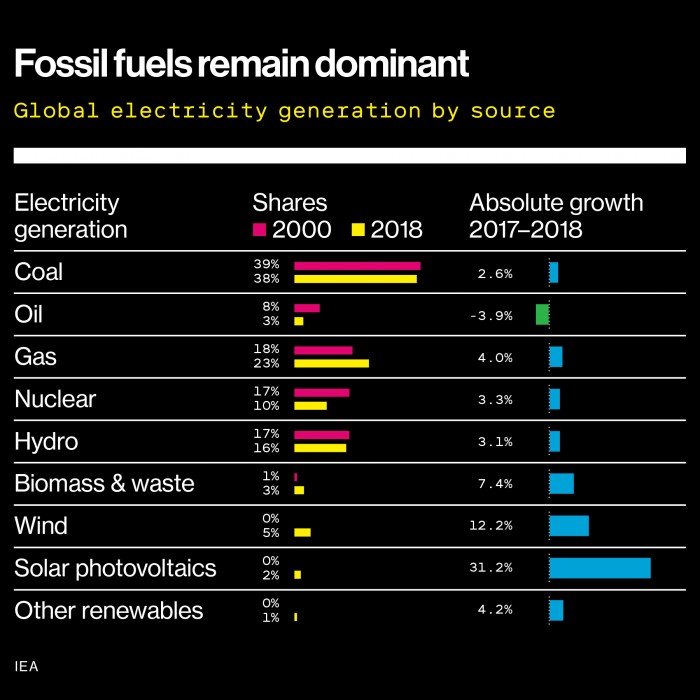The one number you need to know about climate change
The social cost of carbon could guide us toward intelligent policies—if only we knew what it was.

In contrast to the existential angst currently in fashion around climate change, there’s a cold-eyed calculation that its advocates, mostly economists, like to call the most important number you’ve never heard of.
It’s the social cost of carbon. It reflects the global damage of emitting one ton of carbon dioxide into the sky, accounting for its impact in the form of warming temperatures and rising sea levels. Economists, who have squabbled over the right number for a decade, see it as a powerful policy tool that could bring rationality to climate decisions. It’s what we should be willing to pay to avoid emitting that one more ton of carbon.
For most of us, it’s a way to grasp how much our carbon emissions will affect the world’s health, agriculture, and economy for the next several hundred years. Maximilian Auffhammer, an economist at the University of California, Berkeley, describes it this way: it’s approximately the damage done by driving from San Francisco to Chicago, assuming that about a ton of carbon dioxide spits out of the tailpipe over those 2,000 miles.
Common estimates of the social cost of that ton are $40 to $50. The cost of the fuel for the journey in an average car is currently around $225. In other words, you’d pay roughly 20% more to take the social cost of the trip into account.
The number is contentious, however. A US federal working group in 2016, convened by President Barack Obama, calculated it at around $40, while the Trump administration has recently put it at $1 to $7. Some academic researchers cite numbers as high as $400 or more.
Why so wide a range? It depends on how you value future damages. And there are uncertainties over how the climate will respond to emissions. But another reason is that we actually have very little insight into just how climate change will affect us over time. Yes, we know there’ll be fiercer storms and deadly wildfires, heat waves, droughts, and floods. We know the glaciers are melting rapidly and fragile ocean ecosystems are being destroyed. But what does that mean for the livelihood or life expectancy of someone in Ames, Iowa, or Bangalore, India, or Chelyabinsk, Russia?
For the first time, vast amounts of data on the economic and social effects of climate change are becoming available, and so is the computational power to make sense of it. Taking this opportunity to compute a precise social cost of carbon could help us decide how much to invest and which problems to tackle first.
“It is the single most important number in the global economy,” says Solomon Hsiang, a climate policy expert at Berkeley. “Getting it right is incredibly important. But right now, we have almost no idea what it is.”
That could soon change.



Atmospheric carbon dioxide concentrations have steadily risen this century, increasing the dangers of climate change. Some countries have begun to decrease carbon pollution or at least keep it steady, but it’s soaring in certain fast-developing nations. Global emissions levels declined slightly earlier this decade, but a growing worldwide economy has pushed them up again.
The cost of death
In the past, calculating the social cost of carbon typically meant estimating how climate change would slow worldwide economic growth. Computer models split the world into at most a dozen or so regions and then averaged the predicted effects of climate change to get the impact on global GDP over time. It was at best a crude number.
Over the last several years, economists, data scientists, and climate scientists have worked together to create far more detailed and localized maps of impacts by examining how temperatures, sea levels, and precipitation patterns have historically affected things like mortality, crop yields, violence, and labor productivity. This data can then be plugged into increasingly sophisticated climate models to see what happens as the planet continues to warm.
The wealth of high-resolution data makes a far more precise number possible—at least in theory. Hsiang is co-director of the Climate Impact Lab, a team of some 35 scientists from institutions including the University of Chicago, Berkeley, Rutgers, and the Rhodium Group, an economic research organization. Their goal is to come up with a number by looking at about 24,000 different regions and adding together the diverse effects that each will experience over the coming hundreds of years in health, human behavior, and economic activity.
It’s a huge technical and computational challenge, and it will take a few years to come up with a single number. But along the way, the efforts to better understand localized damages are creating a nuanced and disturbing picture of our future.
So far, the researchers have found that climate change will kill far more people than once thought. Michael Greenstone, a University of Chicago economist who co-directs the Climate Impact Lab with Hsiang, says that previous mortality estimates had looked at seven wealthy cities, most in relatively cool climates. His group looked at data gleaned from 56% of the world’s population. It found that the social cost of carbon due to increased mortality alone is $30, nearly as high as the Obama administration’s estimate for the social cost of all climate impacts. An additional 9.1 million people will die every year by 2100, the group estimates, if climate change is left unchecked (assuming a global population of 12.7 billion people).
Unfairly Distributed
However, while the Climate Impact Lab’s analysis showed that 76% of the world’s population would suffer from higher mortality rates, it found that warming temperatures would actually save lives in a number of northern regions. That’s consistent with other recent research; the impacts of climate change will be remarkably uneven.
The variations are significant even within some countries. In 2017, Hsiang and his collaborators calculated climate impacts county by county in the United States. They found that every degree of warming would cut the country’s GDP by about 1.2%, but the worst-hit counties could see a drop of around 20%.
If climate change is left to run unchecked through the end of the century, the southern and southwestern US will be devastated by rising rates of mortality and crop failure. Labor productivity will slow, and energy costs (especially due to air-conditioning) will rise. In contrast, the northwestern and parts of the northeastern US will benefit.

“It is a massive restructuring of wealth,” says Hsiang. This is the most important finding of the last several years of climate economics, he adds. By examining ever smaller regions, you can see “the incredible winners and losers.” Many in the climate community have been reluctant to talk about such findings, he says. “But we have to look [the inequality] right in the eye.”
The social cost of carbon is typically calculated as a single global number. That makes sense, since the damage of a ton of carbon emitted in one place is spread throughout the world. But last year Katharine Ricke, a climate scientist at UC San Diego and the Scripps Institution of Oceanography, published the social costs of carbon for specific countries to help parse out regional differences.
India is the big loser. Not only does it have a fast-growing economy that will be slowed, but it’s already a hot country that will suffer greatly from getting even hotter. “India bears a huge share of the global social cost of carbon—more than 20%,” says Ricke. It also stands out for how little it has actually contributed to the world’s carbon emissions. “It’s a serious equity issue,” she says.
Estimating the global social cost of carbon also raises a vexing question: How do you put a value on future damages? We should invest now to help our children and grandchildren avoid suffering, but how much? This is hotly and often angrily debated among economists.
A standard tool in economics is the discount rate, used to calculate how much we should invest now for a payoff years from now. The higher the discount rate, the less you value the future benefit. William Nordhaus, who won the 2018 Nobel Prize in economics for pioneering the use of models to show the macroeconomic effects of climate change, has used a discount rate of around 4%. The relatively high rate suggests we should invest conservatively now. In sharp contrast, a landmark 2006 report by British economist Nicholas Stern used a discount rate of 1.4%, concluding that we should begin investing much more heavily to slow climate change.
There’s an ethical dimension to these calculations. Wealthy countries whose prosperity has been built on fossil fuels have an obligation to help poorer countries. The climate winners can’t abandon the losers. Likewise, we owe future generations more than just financial considerations. What’s the value of a world free from the threat of catastrophic climate events—one with healthy and thriving natural ecosystems?

Outrage
Enter the Green New Deal (GND). It’s the sweeping proposal issued earlier this year by Representative Alexandria Ocasio-Cortez and other US progressives to address everything from climate change to inequality. It cites the dangers of temperature increases beyond the UN goal of 1.5 °C and makes a long list of recommendations. Energy experts immediately began to bicker over its details: Is achieving 100% renewables in the next 12 years really feasible? (Probably not.) Should it include nuclear power, which many climate activists now argue is essential for reducing emissions?
In reality, the GND has little to say about actual policies and there’s barely a hint of how it will attack its grand challenges, from providing a secure retirement for all to fostering family farms to ensuring access to nature. But that’s not the point. The GND is a cry of outrage against what it calls “the twin crises of climate change and worsening income inequality.” It’s a political attempt to make climate change part of the wider discussion about social justice. And, at least from the perspective of climate policy, it’s right in arguing that we can’t tackle global warming without considering broader social and economic issues.
The work of researchers like Ricke, Hsiang, and Greenstone supports that stance. Not only do their findings show that global warming can worsen inequality and other social ills; they provide evidence that aggressive action is worth it. Last year, researchers at Stanford calculated that limiting warming to 1.5 °C would save upwards of $20 trillion worldwide by the end of the century. Again, the impacts were mixed—the GDPs of some countries would be harmed by aggressive climate action. But the conclusion was overwhelming: more than 90% of the world’s population would benefit. Moreover, the cost of keeping temperature increases limited to 1.5 °C would be dwarfed by the long-term savings.
Nevertheless, the investments will take decades to pay for themselves. Renewables and new clean technologies may lead to a boom in manufacturing and a robust economy, but the Green New Deal is wrong to paper over the financial sacrifices we’ll need to make in the near term.
That is why climate remedies are such a hard sell. We need a global policy—but, as we’re always reminded, all politics is local. Adding 20% to the cost of that San Francisco–Chicago trip might not seem like much, but try to convince a truck driver in a poor county in Florida that raising the price of fuel is wise economic policy. A much smaller increase sparked the gilets jaunes riots in France last winter. That is the dilemma, both political and ethical, that we all face with climate change.
Keep Reading
Most Popular
How scientists traced a mysterious covid case back to six toilets
When wastewater surveillance turns into a hunt for a single infected individual, the ethics get tricky.
The problem with plug-in hybrids? Their drivers.
Plug-in hybrids are often sold as a transition to EVs, but new data from Europe shows we’re still underestimating the emissions they produce.
Sam Altman says helpful agents are poised to become AI’s killer function
Open AI’s CEO says we won’t need new hardware or lots more training data to get there.
Stay connected
Get the latest updates from
MIT Technology Review
Discover special offers, top stories, upcoming events, and more.